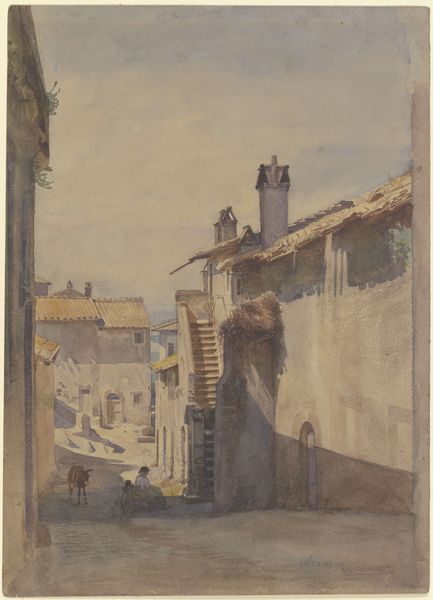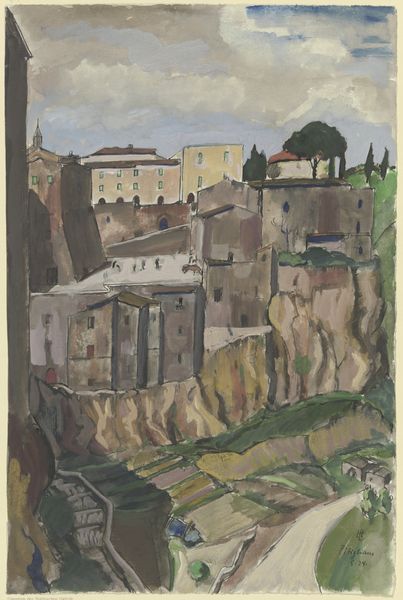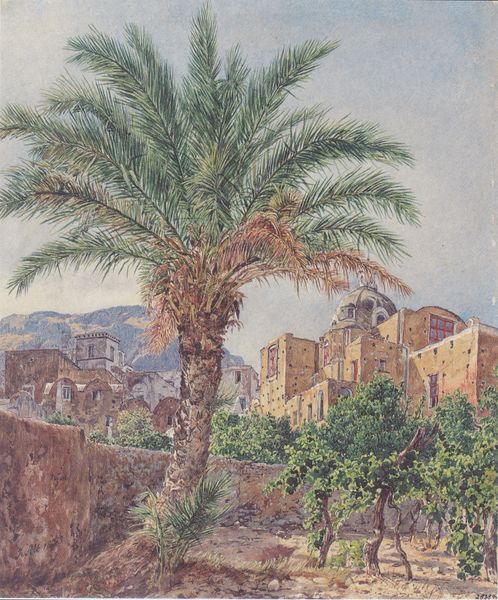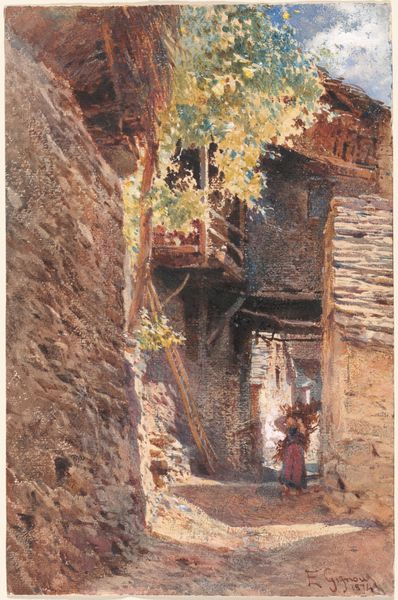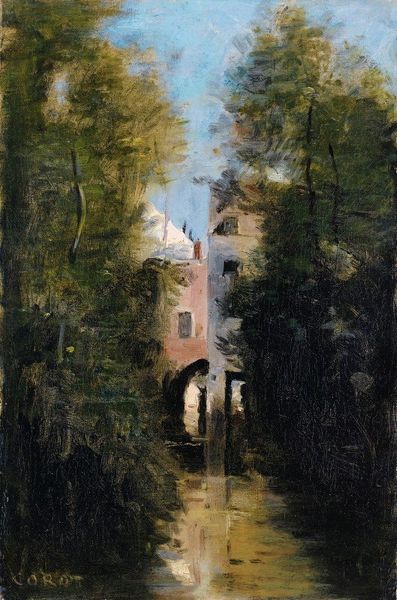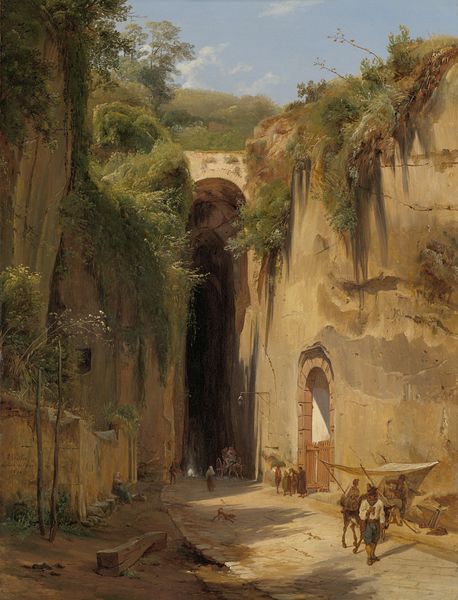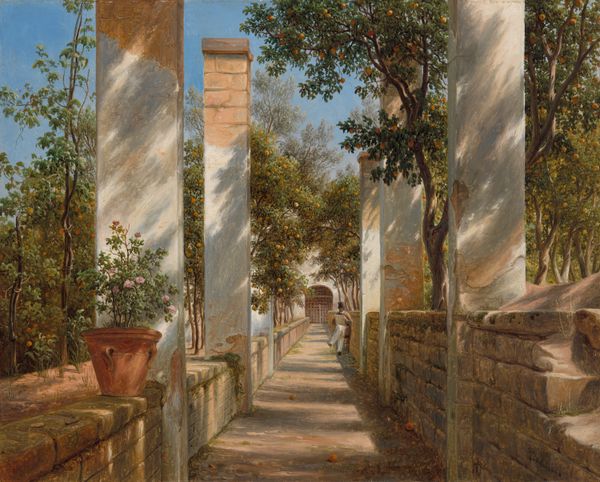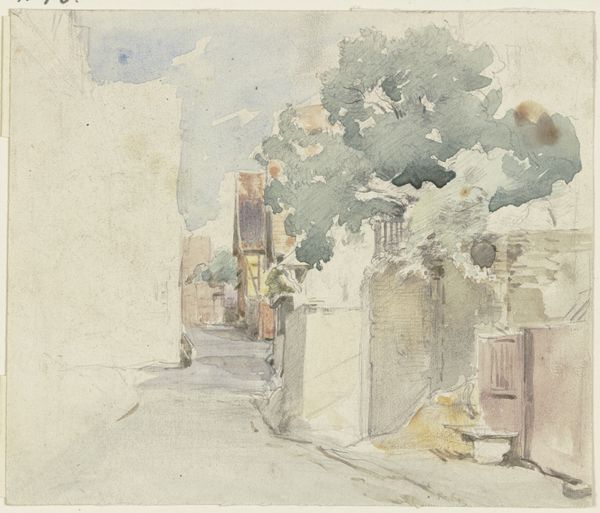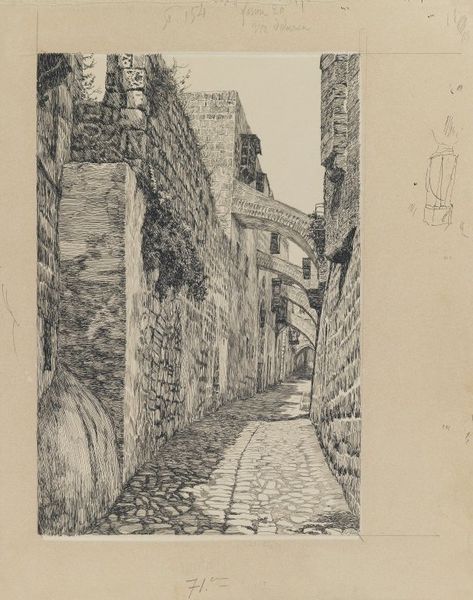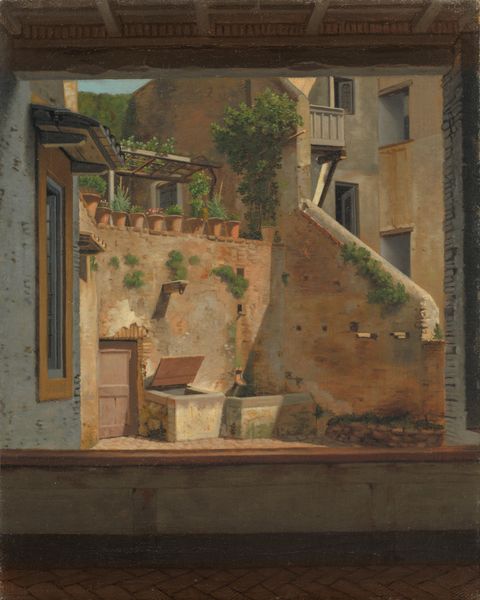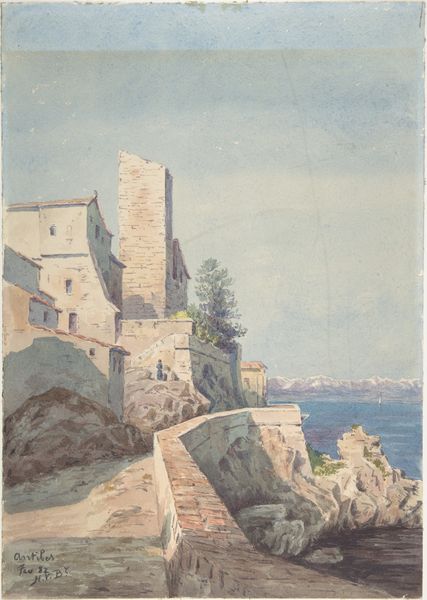
drawing, print, watercolor
#
drawing
# print
#
landscape
#
watercolor
#
intimism
#
romanticism
#
watercolour illustration
#
watercolor
Dimensions: 14-9/16 x 10-3/4 in. (37 x 27.3 cm)
Copyright: Public Domain
Curator: Looking at "A Glen in Sorrento," created by Thomas Hartley Cromek sometime between 1825 and 1873 and now housed at The Metropolitan Museum of Art. It's executed as a watercolor drawing and print. Editor: Immediately, I'm struck by how this watercolor balances the stark verticality of the stone pathway and rock faces against the soft, diffused light of the sky peeking through the narrow space. There's a tension between enclosure and openness. Curator: It’s interesting to consider Cromek’s choice of watercolor in depicting Sorrento. Think about the accessibility and transportability of this medium for an artist traversing and documenting landscape. Editor: Indeed, watercolor allows for layering, for depicting both solidity and ephemerality. Consider the contrast in textures, from the rugged stone to the delicate rendering of the vegetation clinging to the walls. He also employs contrasting hard lines versus smudged, indistinct shapes in his rendering, notably between the stonework and vegetation.. Curator: And notice how Cromek strategically uses these varied brushstrokes to portray textures but also to structure a sense of class—observe how the hard cut stone pathway juxtaposes against the figures at the ravine who perhaps perform hard labor. Editor: Ah, that foreground vignette also offers an anchor amidst the vertiginous perspective—without those figures and hint of activity the scene could have lacked narrative entirely. What do you see as his primary concern here? Curator: I see a dialogue about how structures are placed and valued differently when built against natural backdrops, but perhaps that also serves the picturesque tropes favored by Romanticism. The very choice of rendering, too, through accessible watercolor suggests the expansion of markets and middle-class aesthetic values in the art world at the time. Editor: You highlight essential societal undercurrents. Yet for me, it returns to that controlled atmospheric quality, evoking place while maintaining painterly structure. Each of those planes receding into the distance contributes to depth while creating compositional layers. Curator: Absolutely. These insights give us, I believe, richer understanding of the artist’s milieu, and more appreciation of Cromek’s craft, in both senses of the word. Editor: Yes, I agree, understanding Cromek's use of composition alongside its thematic content adds significant value.
Comments
No comments
Be the first to comment and join the conversation on the ultimate creative platform.
